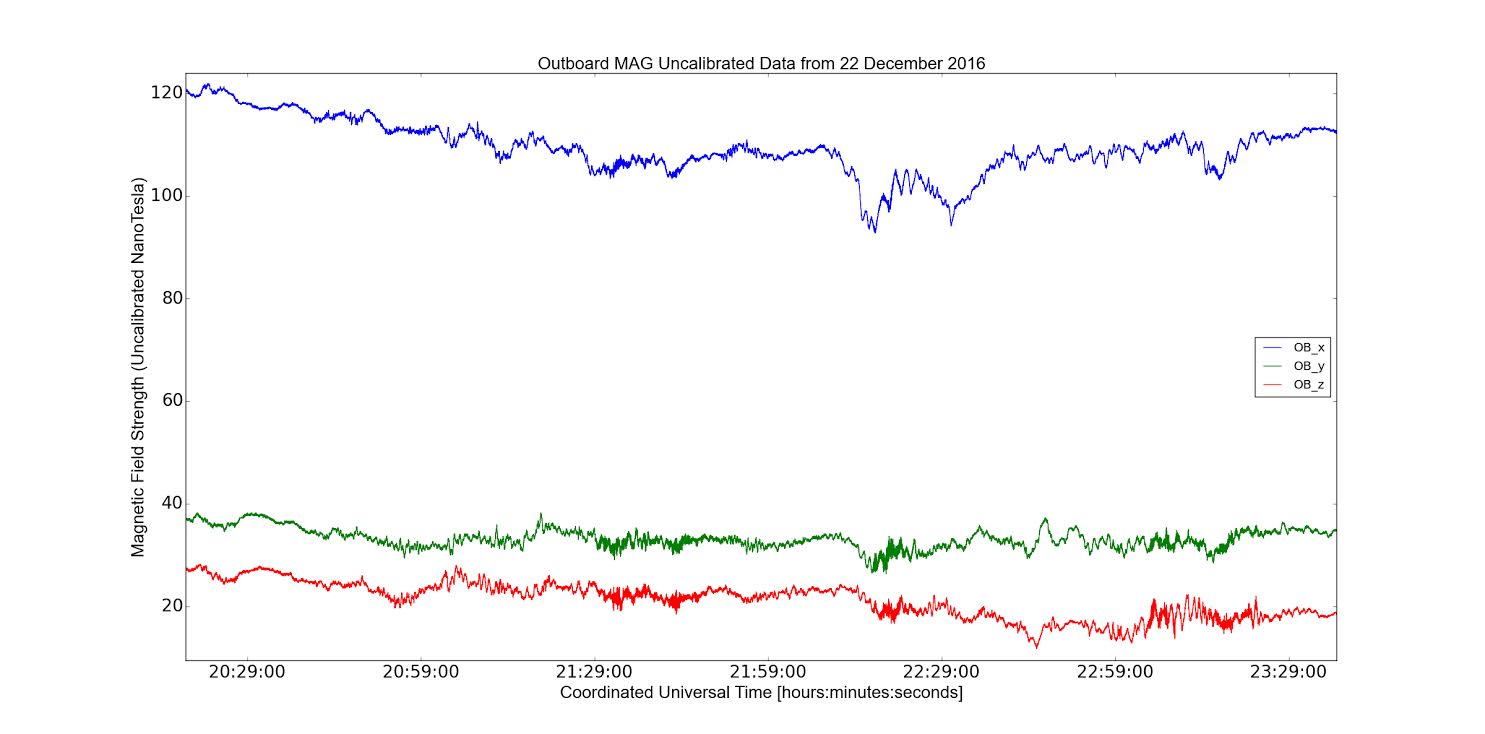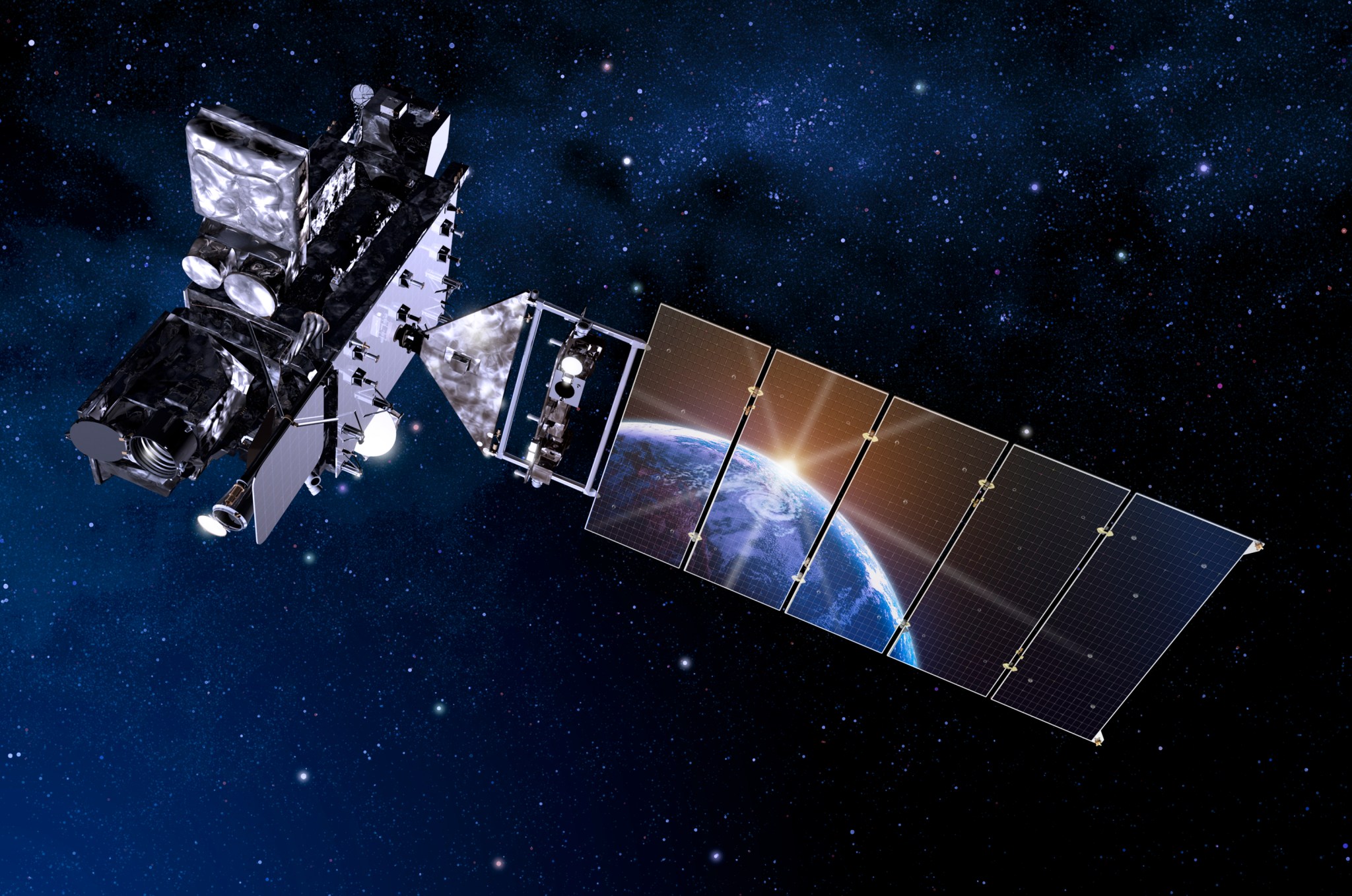On Dec. 22, scientists received preliminary data from the outboard magnetometer (MAG) instrument aboard NOAA’s GOES-16 satellite! GOES-16 was formerly known as GOES-R.
MAG observations of Earth’s geomagnetic field strength are an important part of NOAA’s space weather mission, with the data used in space weather forecasting, model validation and for developing new space weather models. The GOES-16 MAG samples five times faster than previous GOES magnetometers, which increases the range of space weather phenomena that can be measured. (You can learn more about the GOES-16’s magnetometer at http://www.goes-r.gov/products/baseline-geomagnetic-field.html.)
Earth’s geomagnetic field acts as a shield, protecting us from hazardous incoming solar radiation. Geomagnetic storms, caused by eruptions on the surface of the sun, can interfere with communications and navigation systems, cause damage to satellites, cause health risks to astronauts and threaten power utilities. When a solar flare occurs, GOES-16 will tell space weather forecasters where it happened on the sun and how strong it was. Using that information, forecasters can determine if the explosion of energy is coming toward Earth or not.
GOES-R, a National Oceanic and Atmospheric Administration mission, is the first spacecraft in a new series of NASA-built advanced geostationary weather satellites. NASA successfully launched GOES-R at 6:42 p.m. EST on Nov. 19, 2016, from Cape Canaveral Air Force Station in Florida. NOAA manages the GOES-R Series Program through an integrated NOAA-NASA office. NASA’s Goddard Space Flight Center in Greenbelt, Maryland, oversees the acquisition of the GOES-R series spacecraft and instruments.
Learn more about space weather and our infrastructure at http://go.usa.gov/x8y34.
By Lauren Gaches
National Oceanic and Atmospheric Administration
Media Contact: Rob Gutro
NASA’s Goddard Space Flight Center, Greenbelt, Md.


























